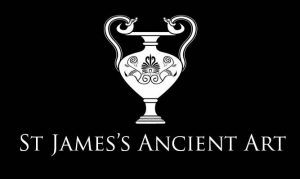The scarab beetle was an exceedingly popular symbol in the art of Ancient Egypt, thought to represent the sun god, Ra. The Ancient Egyptians believed that the scarab beetle rolling its ball of dung across the desert mirrored the journey of the sun across the sky from day to night. As the beetle laid its eggs within the dung, it became a symbol of rebirth and regeneration. These scarab beetle amulets were made in various forms, such as heart scarabs, commemorative scarabs, and scarab amulets, thus catering to different functions. Scarab amulets were believed to have magical rejuvenating properties, used by both the living and the dead.
Khonsu was the Egyptian god of the moon, worshiped extensively in Thebes. Together with his mother, Mut, and father, Amun, he formed part of the Theban triad. He was a god associated with travel and the passing of time and had a vital role to play in the creation of life.
To discover more about amulets in the Ancient Egyptian world, please visit our relevant post: Amulets in Ancient Egypt.










